 By Pepper Parr
By Pepper Parr
December 30, 2014
BURLINGTON, ON
The city is taking a different approach to the way they present their budget to the public and a significantly different approach to how staff work with the funds they are given to use.
In an effort to show tax payers where the money is going and the value gotten from the spending the city is now setting up budgets based on the service delivered rather than on just the department that that does the spending.
 This approach has introduced a significantly different business process management and brings forward a phrase you are going to hear a lot of from your council member: Results Based Accountability – the city wants you to know that staff will be accountable for the results they deliver.
This approach has introduced a significantly different business process management and brings forward a phrase you are going to hear a lot of from your council member: Results Based Accountability – the city wants you to know that staff will be accountable for the results they deliver.
Not quite sure how that phrase would be applied to the pier. Several council members expressed concern and surprise over how many people in their wards had not ever been to the pier. Yet we spent more than twice the original price of $6 million – and I’ve yet to hear any Council member even mention the word accountability let along accept any responsibility for the thing – which the public appears not to care all that much about.
The city has released a draft budget that will call for a tax increase of 3.55% in 2015 – a little higher than inflation isn’t it?
Included in that budget are nine business cases for new, or improved or upgraded services. Each business case sets out the argument for the expenditure.
One of the nine business cases is about transit – a service expansion, an upgraded Community Connection will cost $337,000, add three Full time employees (FTE’s) and tack on one quarter of one percent to the tax levy.
This service is designed to connect the places where seniors live to the places seniors want to travel to. The Seniors’ Centre would be the hub for this service.
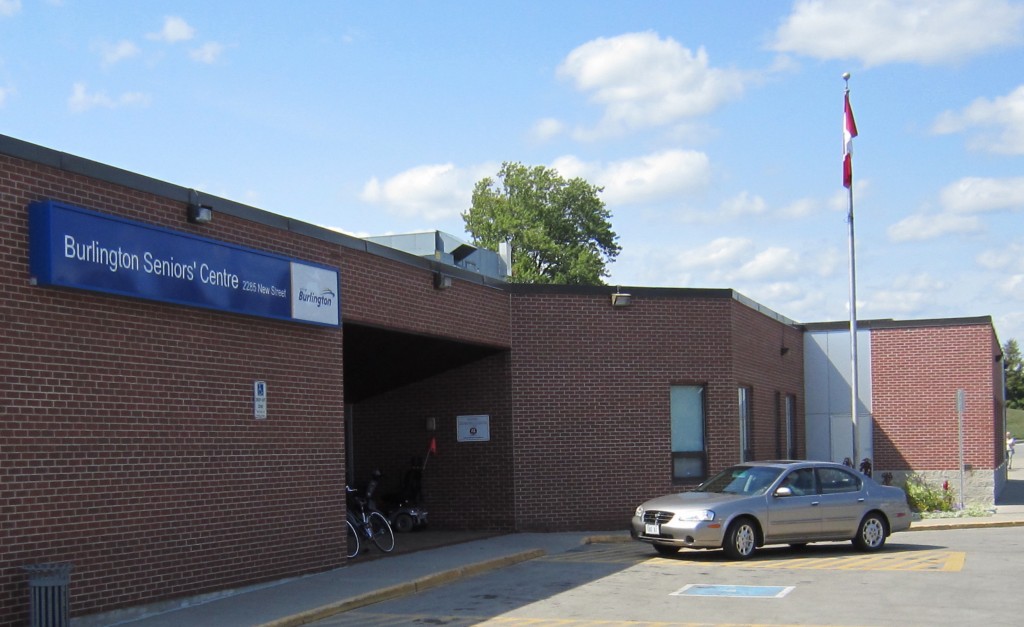
There is nothing fancy about the place. It’s simple, serves the purpose with a bus stop almost outside the door and plenty of parking. The site will become a bit of a mobility hub for the Community Connection the city proposes to upgrade.
There is a Community Connection service that runs just two days a week – the proposal is to make this a Monday to Friday service running from 10am to 3 pm with additional links added to the service.
The Business Plan approach requires that the potential benefits and risks be spelled out and that what the metric for success will be. Smaller buses will mean lower fuel costs (lower gas prices aren’t going to hurt either) – the risk at this level is defined as low.
The Business Plan approach requires staff to explain “How Success will be measured”. Here they set the bar so low that they can’t possibly fail. Transit staff talk in terms of an additional 8 boarding’s each hour on the route. The service, if approved, will run for five hours each day –and they call success a total of 40 boarding’s during the week. That seems like an almost incredibly low number. It gets taken up to 14 boardings an hour in 2016.
Included in the nine new business cases is an $84,000 expenditure for 3D Visualization software – which the city should have bought five years ago. It’s a minor expense but the business case doesn’t tell the full story. There doesn’t appear to be any allocation for staff training nor is there any mention of ongoing upgrades to the software – and with software there are always upgrades.
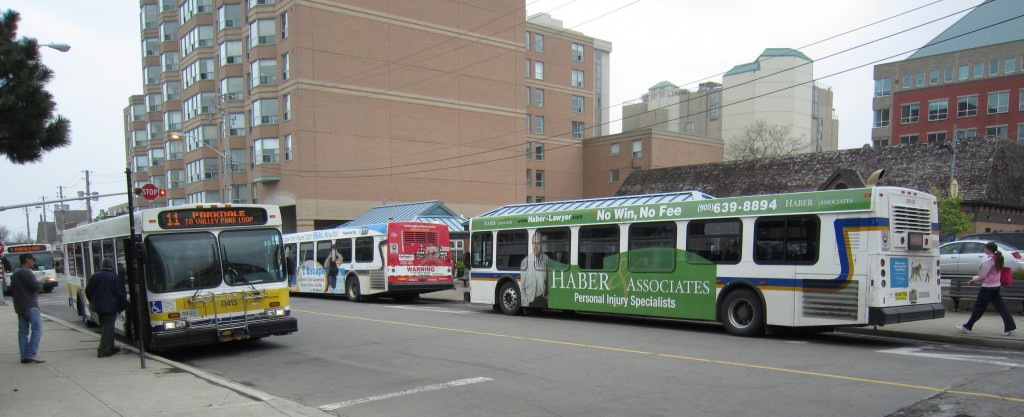
The terminal on John Street where many of the bus service transfers are made is to be made one of the mobility hubs in the city. Still a lot of thinking to be done on how the parking lot gets integrated into the plan.
The benefit to the city is they will have a tool that will allow them to create images of the growth of the community. “Building on existing models” the business case made adds that “the downtown will be completed first with other mobility hub areas and intensification corridors to follow”. Mobility hubs are points in the city where different transportation modes come together: the GO stations at Aldershot, Burlington and Appleby Line are the prime identified bubs at the moment with the John street terminal added. There are many that believe there should be an additional hub somewhere near the top of Appleby Line.
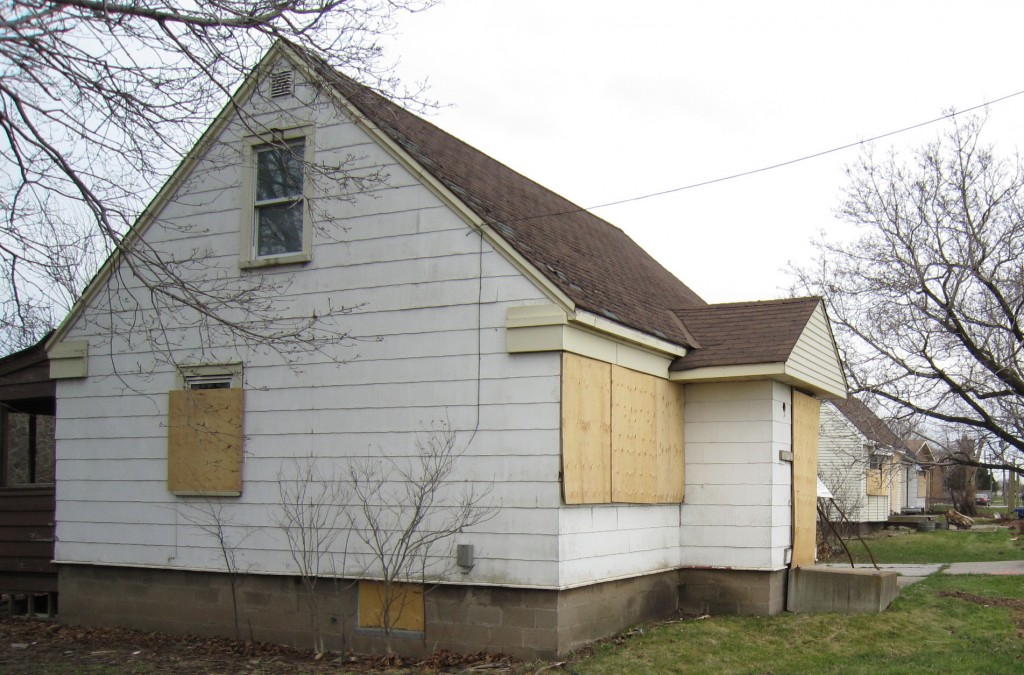
Six properties were assembled in a part of the city that is to some degree isolated – they’ve basically nothing in the way of parks – and crossing the railway tracks is one way this community gets its daily exercise.
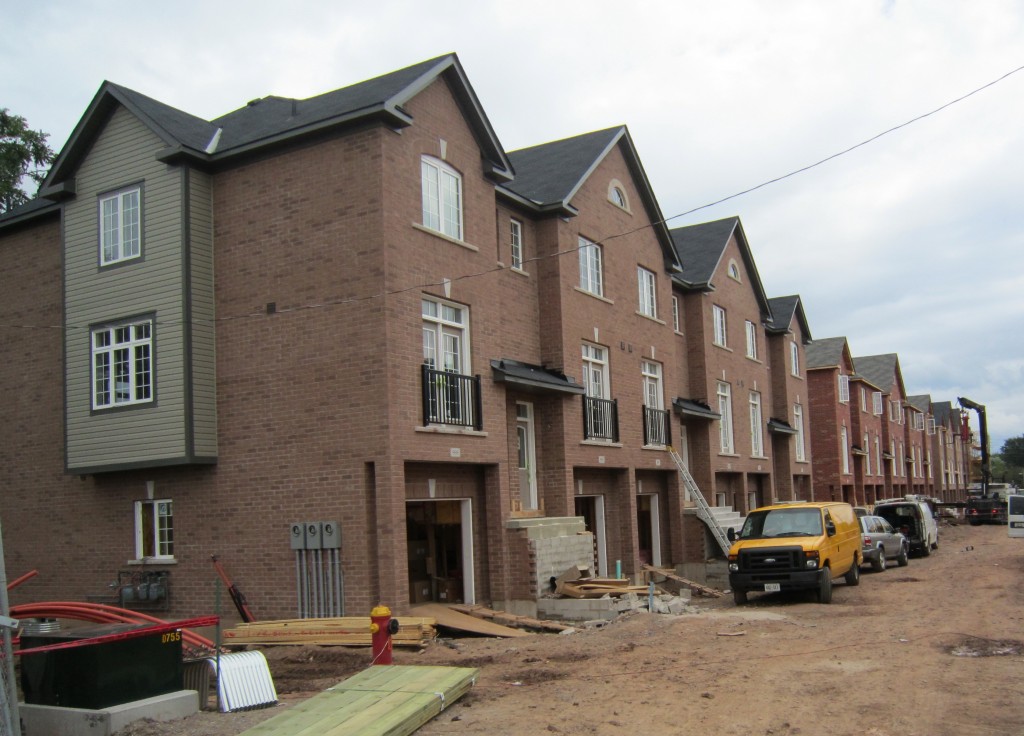
Those six properties in the Queensway shown above were assembled, houses demolished and 54 units built. would 3D modelling have let the public know how massive the change was going to be?
The 3D models will be used for public engagement, council meetings and visioning exercises. “One of the central elements of the project will be the ability to build the model by requiring builders and developers to submit images of proposed and completed development projects for import to the model.
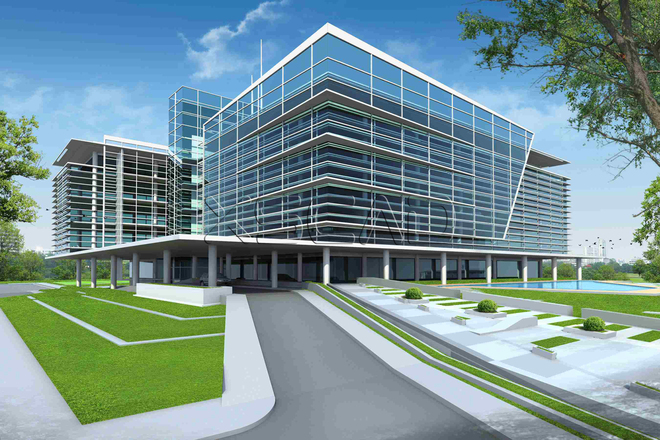
An example of 3D rendering. The software used to create the image allows the image to be seen at different angles and elevations. Creatively used it can be a very effective tool.
The Capital Works department says “success will be measured by” Customer satisfaction but it isn’t clear just who the customer is. The developers are not going to like the additional expense. They might want access to the model – will the city give it to them?
Heck – the Gazette would like access to that model.
The other two success criteria are “Model Utilization” and the “% of Complaint submissions”. So they have thought of the complaints that will come in. Interesting.
Each business case is required to set out the potential risks and benefits and what the probabilities of each actually are. The benefit/risk probability for the project is high if the project proves to provide an effective tool to assist Council and the public to visualize alternate development proposals.
Not implementing the service is given a medium probability due to the “lack of community support and understanding of intensification”.
 And that is what this $84,000 expenditure is really all about – showing the public what intensification will look like before it gets shoved down their throats.
And that is what this $84,000 expenditure is really all about – showing the public what intensification will look like before it gets shoved down their throats.


















I like the new approach to laying out the proposed budget. It should result in more citizen (no, not customer) engagement.
Re the 3D Modelling software, I respect the above comments and would recommend to council that there be some engagement (before budget deliberations) with the obvious expertise we have in Burlington. Judging by the lack of comments from any member of council to Gazette articles, my comments will most likely fall on deaf ears with them (possible exception being MWD and JT).
Great coverage as usual, Pepper.
Regarding 3D Modelling software, (this is what I do for a living):
– I proposed this from the start of my campaign
– The city is the wrong place for this, it should be at the region
– Almost every project of any size already produces 3D models, so why would the city need to duplicate this effort?
– Major projects should have a standard format they have to produce to (3DS, Cinema 4D, IGES for example)
– Software is only part of the picture – Hardware in the form of either a fixed theatre, or mobile presentation venue is the way of the future
– How many seats (# of copies of the software) are they purchasing?
– Who will operate this software?
– $84K for software alone is 10-15x’s too much
– $84K for Hardware & either fixed or mobile theatre is not enough by 5x’s
Editor’s note: Smith spoke and wrote frequently on using this kind of software during his election campaign.
Right on, James! Software is like a musical instrument. Fabulous in potential but useless without an operator/musician. No doubt Municipalities and Corporations have blown many $ on great, but misunderstood or underused software. Often there are proprietary file formats that cannot be read by other generic software. Standard formats for file export and import are critical, as James suggests. It is generally not necessary to own the design software for the purpose of visualization in another more generic format.
Never buy software until it is affirmed that someone can implement and use it for an advantage.
You may want to get Doug Brown’s take on so-called Community Connection Transit services aimed at Seniors. This is one of those ideas that sounds like a good idea in concept, but it has failed everywhere it has been attempted. The TTC has phased out this service for example. People want freedom of movement on transit, if Mr Spicer at BT ever rode a bus he would know know that, anyhow, we all know his hands are tied by this council.
It is interesting to see that the Community Bus is to be extended to 5 days a week. The article mentions that the Senior Centre will be the hub….presently the bus may stop at the Centre, but it does not pick up people at the Centre. The bus route is a loop – it can take a senior an hour before they can get home. If the plan is to continue the same way but have the bus operating 5 days a week I doubt it will be successful.
Perhaps smaller buses operating more direct routes would result in more ridership.